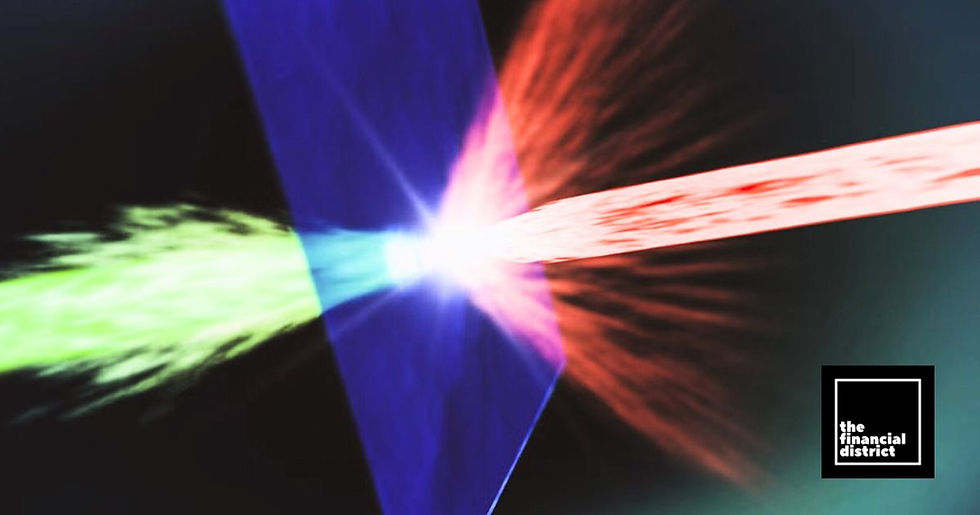Record-Smashing Electron Beam Delivers A Petawatt Of Power Instantly
- By The Financial District

- Mar 13
- 2 min read
Physicists at SLAC National Accelerator Laboratory in the U.S. have shattered the record for the most powerful beam of electrons, cramming an ultra-high current of around 100,000 amps into an instant, ScienceAlert’s Mike McRae reported.

The team's innovative technique for steering millimeter-long chains of electrons along a magnetic track allows them to squeeze the race down into a photo finish, delivering more than a petawatt of power in one million-billionth of a second. I Photo: SLAC National Accelerator Laboratory Facebook
At around five times the field strength of what was previously possible, the staggering energy in the beam’s electric field at SLAC’s FACET-II linear accelerator could push the boundaries of experimentation, leading to new discoveries in fields ranging from astrophysics to materials science.
The team's innovative technique for steering millimeter-long chains of electrons along a magnetic track allows them to squeeze the race down into a photo finish, delivering more than a petawatt of power in one million-billionth of a second.
Particle accelerators have been a vital tool for physicists for nearly a century, using oscillating electromagnetic fields to nudge charged particles up to velocities approaching the speed of light.
As these particles change direction, their own fields emit high-energy X-ray photons that illuminate materials for high-resolution imaging.
By placing another wall of electromagnetism in front of this beam, the energy from the colliding fields could shake a variety of new particles from the quantum foam itself.
To create more intense flashes of light or bigger collisions, more energy is needed. However, since the electrons are already traveling at nearly maximum velocity as they surf waves of electromagnetism, increasing their speed further isn’t an option.
Instead, researchers employed a different trick. Though all the electrons race at the same speed, they are distributed along the slope of an electromagnetic wave, with some at the bottom and some at the top.
The electrons at the top have more energy whenever they swerve.
To slow down those at the bottom, researchers needed a way to apply the brakes slightly.
One common method to achieve this involves using a magnetic obstacle, which forces lower-energy particles to take a slightly longer path—similar to how a chicane on a racetrack forces a less powerful car to weave left and right while a high-powered car can push straight through.





![TFD [LOGO] (10).png](https://static.wixstatic.com/media/bea252_c1775b2fb69c4411abe5f0d27e15b130~mv2.png/v1/crop/x_150,y_143,w_1221,h_1193/fill/w_179,h_176,al_c,q_85,usm_0.66_1.00_0.01,enc_avif,quality_auto/TFD%20%5BLOGO%5D%20(10).png)











